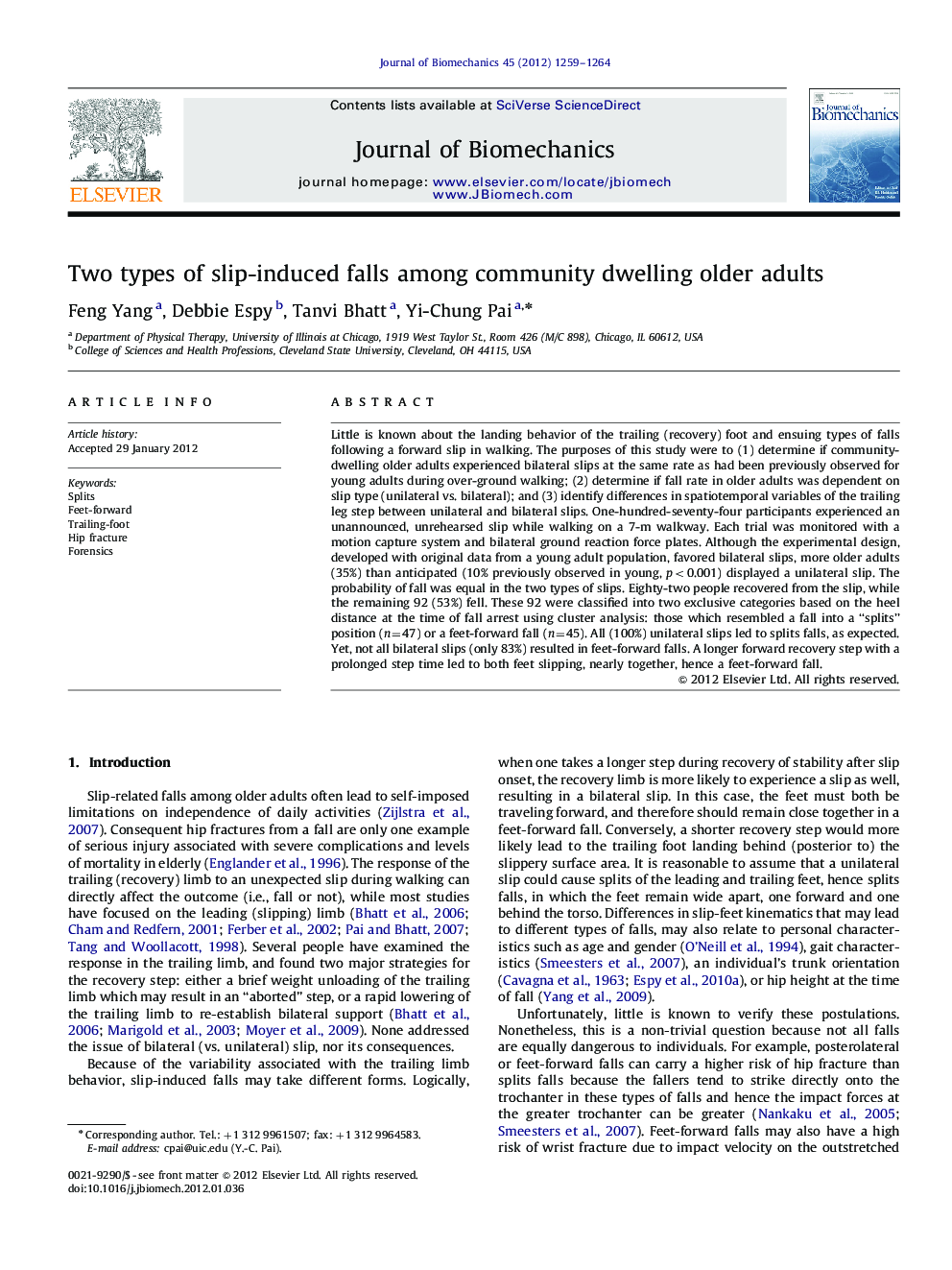| Article ID | Journal | Published Year | Pages | File Type |
|---|---|---|---|---|
| 872671 | Journal of Biomechanics | 2012 | 6 Pages |
Little is known about the landing behavior of the trailing (recovery) foot and ensuing types of falls following a forward slip in walking. The purposes of this study were to (1) determine if community-dwelling older adults experienced bilateral slips at the same rate as had been previously observed for young adults during over-ground walking; (2) determine if fall rate in older adults was dependent on slip type (unilateral vs. bilateral); and (3) identify differences in spatiotemporal variables of the trailing leg step between unilateral and bilateral slips. One-hundred-seventy-four participants experienced an unannounced, unrehearsed slip while walking on a 7-m walkway. Each trial was monitored with a motion capture system and bilateral ground reaction force plates. Although the experimental design, developed with original data from a young adult population, favored bilateral slips, more older adults (35%) than anticipated (10% previously observed in young, p<0.001) displayed a unilateral slip. The probability of fall was equal in the two types of slips. Eighty-two people recovered from the slip, while the remaining 92 (53%) fell. These 92 were classified into two exclusive categories based on the heel distance at the time of fall arrest using cluster analysis: those which resembled a fall into a “splits” position (n=47) or a feet-forward fall (n=45). All (100%) unilateral slips led to splits falls, as expected. Yet, not all bilateral slips (only 83%) resulted in feet-forward falls. A longer forward recovery step with a prolonged step time led to both feet slipping, nearly together, hence a feet-forward fall.
